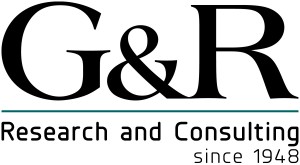Facebook has conducted a series of studies to show the relative value of mobile advertising over television advertising. The studies are based on EEG.
Expedia has opened a dedicated neuroscience lab to look at what influences how people decide to travel. The Lab is based on fEMG.
What does the use of these two fundamentally different neuroscience measures by these two very successful companies say about the current state of applied neuroscience?
Electroencephalography (EEG) and electromyography (EMG) are part of the large toolkit of neuroscience measures that include experiential (e.g., self-report, narrative), bio-behavioral (e.g., FACS, heart rate, skin response and eye tracking), and neurobiological (e.g., peripheral psychophysiology, neuroendocrine, and fMRI). Multi-modal measurement of neuro-physiological response is often used in academic studies but such an approach is usually out of reach for day-to-day business marketing decisions due to practical considerations such as timing and costs. Understanding the overlap and differences across the various techniques can make a more cost-effective set of neurophysiological measures highly informative for business research.
EEG and fEMG are widely used measures of electrical signals in the nervous system. As such, the advantage of both EEG and fEMG measures is that they provide best-in-class temporal resolution. That is, the measures can be recorded nearly instantaneously after the event that triggered them. This varies from other measures, including most physiological measures and fMRI, where there is a time delay between when the marker is detected and the event that produced it occurred. This is an important advantage when the objective of the research is to understand the specific events that “cause” the response.
Where EEG and fEMG depart is in spatial resolution. EEG measures activity within the whole brain and is relatively uncertain for attributing that activity to particular regions of the brain. Since different regions of the brain are responsible for different functions, this introduces an important confound for understanding the nature of the processing that has occurred. fEMG, in contrast, measures activity in facial muscles that derives pre-consciously from specific locations within the brain, generally having to do with the areas most connected to emotion and to reward. This more narrow loci, while still complex, aids in understanding the affective nature of the processing that has occurred. As a result, and while progress has been made with the interpretation of EEG findings, their significance in relation to cognitive function still remains uncertain. fEMG, on the other hand, is generally considered the gold standard for measuring valence. We have found fEMG to be very helpful for understanding continuous response to mild stimuli like advertising and websites.
While temporal strengths favor both approaches, spatial differences favor fEMG. As a result, Facebook’s use of EEG for support may overshoot the capabilities of current neuroscience, while Expedia’s use of fEMG is consistent is current understanding of brain functioning.
More information about the Facebook study can be found here.
More information about the Expedia lab work can be found here.
Thoughts?

Comments are closed.